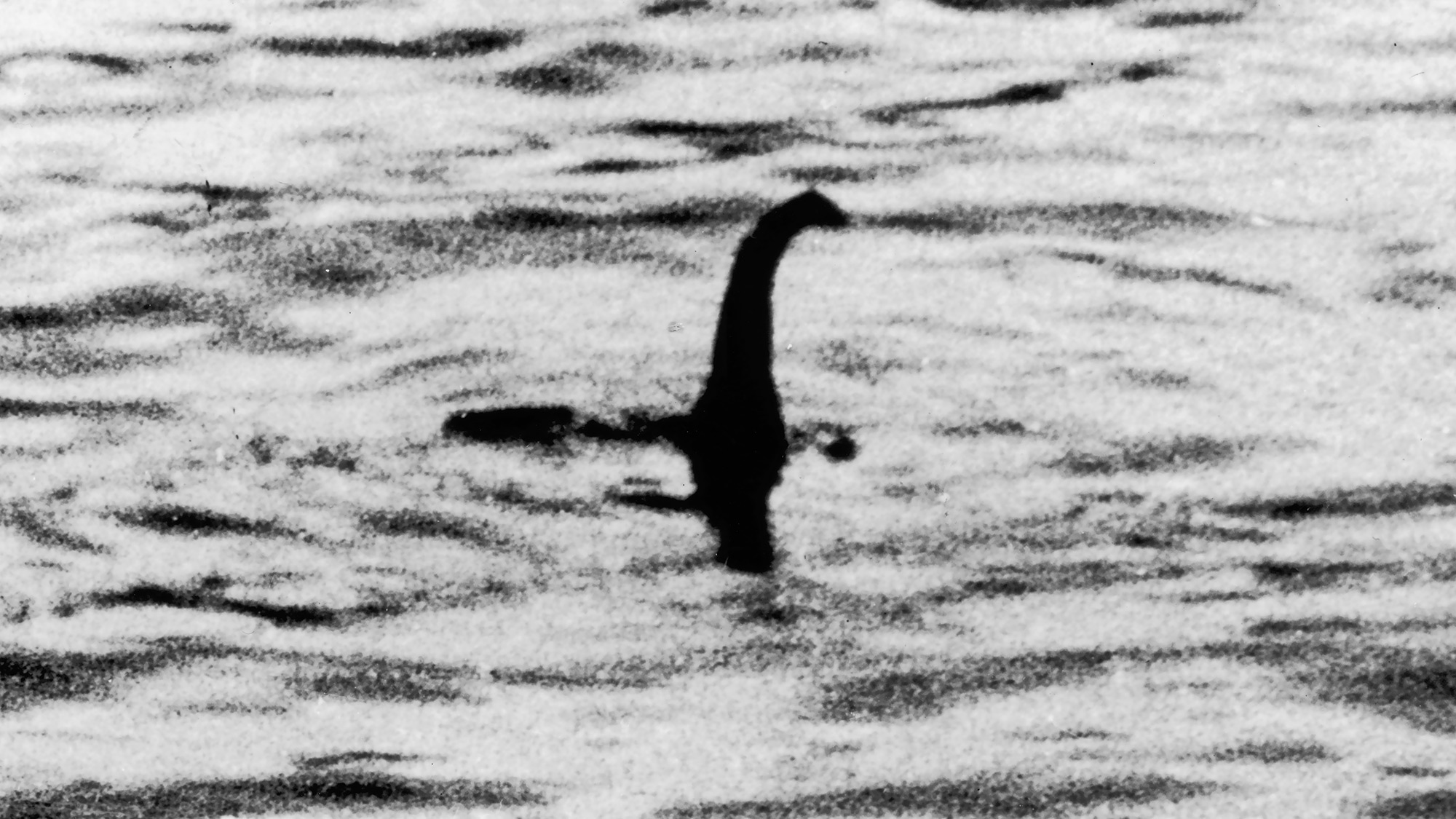No, the Loch Ness Monster was not a whale's penis
But sightings of whale erections may have inspired tales of other famous sea monsters.

One of the more bizarre theories about the origins of the Loch Ness Monster has been debunked by the researcher who helped to start the wild rumor: that long-necked "Nessie" might actually have been a whale's penis.
The new theory surfaced April 8 on Twitter when Michael Sweet, a molecular ecologist at the University of Derby in the U.K., posted pictures of erect blue whale (Balaenoptera musculus) penises, which can reach a maximum length of 10 feet (3 meters), alongside an alleged image of Nessie. The photos highlighted the remarkable similarity between their subjects. Sweet captioned the images by explaining that in the past, sailors might have mistaken erect whale penises at the sea surface for mythical sea creatures.
"Back in [the] day, travellers/explorers would draw what they saw," Sweet wrote on Twitter. "This is where many sea monster stories come from (i.e. tentacled and alienesque appendages emerging from the water, giving belief to something more sinister lurking beneath). However, [in] many cases it was just whale dicks."
By April 14, the tweet accumulated more than 93,000 likes, and it was quickly picked up by a number of tabloid news outlets, primarily in the U.K., that claimed the Loch Ness Monster could have been an erect whale penis after all. However, the pictures had been shared out of context, and many people missed the original intention behind the tweet.
Related: Scientists unravel mystery of echidnas' bizarre 4-headed penis
"I used the image of Nessie just as an example of what people used to describe sea monsters looking like," Sweet told Live Science in an email. "There are no whales whatsoever in Loch Ness, so Nessie was a poor choice to use in this instance." Sweet also believes the photo of Nessie (which was taken in 1934) is most likely a hoax, and he suggested that the cryptid — a creature whose existence is disputed — probably never existed.
The idea of Nessie first became popular in the early 20th century. In 2019, a study of the DNA in Loch Ness, Scotland, confirmed that there was no unusual genetic material in the water, confirming that even if the Loch Ness Monster once lived there, it doesn't anymore, Live Science previously reported.
Sign up for the Live Science daily newsletter now
Get the world’s most fascinating discoveries delivered straight to your inbox.
Back in day, travellers/explorers would draw what they saw. This is where many sea monster stories come from ie. tentacled and alienesque appendages emerging from the water - giving belief to something more sinister lurking beneath....however, many cases it was just whale dicks. pic.twitter.com/6ZH1nJZvB1April 8, 2022
However, this doesn't mean the tweet was totally off base. "The tweet still stands as factual," Sweet told Live Science. "Many whales' penises (from various species) were surely mistaken by tired and half-starved sailors around the world."
This is not the first time researchers have suggested that whale penises have been misinterpreted as mythical sea creatures. In 2005, a study published in the journal Archives of Natural History suggested that a "most dreadful monster" described by Dano-Norwegian explorer Hans Egede in 1734 was most likely the erect penis of a humpback whale (Megaptera novaeangliae) or a sperm whale (Physeter macrocephalus).
In a comment on the original tweet, Sweet explained that it is normal for larger cetaceans to occasionally poke their erect penises out of the water. "Whales often mate in groups, so while one male is busy with the female the other male just pops his dick out of the water while swimming around waiting his turn," Sweet wrote on Twitter. "Everyone's gotta have a bit of fun, right?"
Originally published on Live Science.

Harry is a U.K.-based senior staff writer at Live Science. He studied marine biology at the University of Exeter before training to become a journalist. He covers a wide range of topics including space exploration, planetary science, space weather, climate change, animal behavior and paleontology. His recent work on the solar maximum won "best space submission" at the 2024 Aerospace Media Awards and was shortlisted in the "top scoop" category at the NCTJ Awards for Excellence in 2023. He also writes Live Science's weekly Earth from space series.









